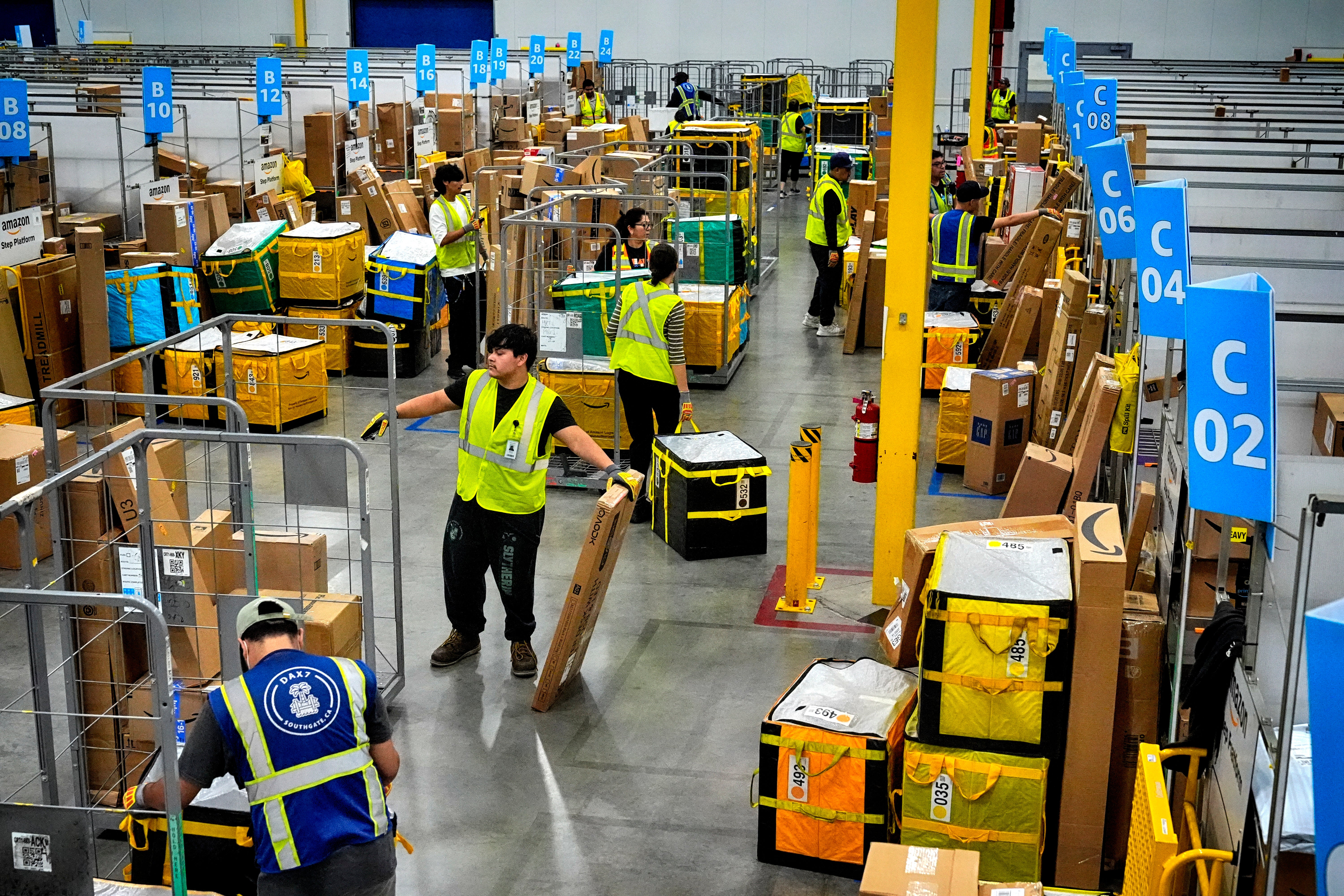US growth likely picked up last quarter after a sluggish start to 2024, reflecting resilient economy
The American economy, boosted by healthy consumer spending, is believed to have regained some momentum this spring after having begun 2024 at a sluggish pace

The American economy, boosted by healthy consumer spending, is believed to have regained some momentum this spring after having begun 2024 at a sluggish pace.
The Commerce Department is expected to report Thursday that the gross domestic product — the economy’s total output of goods and services — increased at a solid if unspectacular 1.9% annual rate from April through June, according to a survey of forecasters by the data firm FactSet. That would be up from 1.4% annual growth in the January-March quarter.
Despite the likely uptick, the U.S. economy, the world's largest, has clearly cooled in the face of the highest borrowing rates in decades. From mid-2022 through the end of 2023, annualized GDP growth had exceeded 2% for six straight quarters.
This year's slowdown reflects, in large part, the much higher borrowing rates for home and auto loans, credit cards and many business loans resulting from the aggressive series of rate hikes the Federal Reserve imposed in its drive to tame inflation. The Fed raised its benchmark rate 11 times in 2022 and 2023, to its current 23-year peak of roughly 5.3%.
The Fed was responding to the flare-up in inflation that began in the spring of 2021 as the economy rebounded with unexpected speed from the COVID-19 recession, causing severe supply shortages. Russia’s invasion of Ukraine in February 2022 made things worse by inflating prices for the energy and grains the world depends on. Prices spiked across the country and the world.
U.S. inflation, measured year over year, eventually did tumble — from 9.1% in June 2022 to the current 3%. Economists had long predicted that the higher borrowing costs would tip the United States into recession. Yet the economy kept chugging along. Consumers, whose spending accounts for roughly 70% of GDP, kept buying things, emboldened by a strong job market and savings they had built up during the COVID-19 lockdowns.
The slowdown at the start of this year was caused largely by two factors, each of which can vary sharply from quarter to quarter: A surge in imports and a drop in business inventories. Neither trend revealed much about the economy's underlying health. Consumer spending did slow as well, though: It grew at a 1.5% annual pace from January through March after having topped 3% in both the third and fourth quarters of 2023.
Joseph Brusuelas, chief economist at tax and consulting firm RSM, said he thinks consumer spending probably bounced back to a solid 2.5% annual pace last quarter. Overall, Brusuelas predicts overall 2.4% annual growth for the quarter. But this time, he says, the expansion was probably exaggerated by an upturn in business inventories.
Dan North, senior economist at Allianz Trade, noted that the quarterly GDP report also contains the Fed’s favored measure of inflation, the personal consumption expenditures price index.
“Maybe inflation is more important in this report than growth,’’ North said.
The PCE index is expected to show that inflationary pressure eased in the April-June quarter after having accelerated to a 3.4% annual rate in the January-March period, from 1.8% in the final three months of 2023.
Fed officials have made clear that with inflation slowing toward their 2% target level, they're prepared to start cutting rates soon, something they're widely expected to do in September.
Brusuelas of RSM said he thinks the central bank shouldn't wait that long, given that the economy is slowing and inflation is headed down.
“We think that the Fed is missing an opportunity to get out ahead of the curve on an economy that is cooling,” he wrote in a research report.